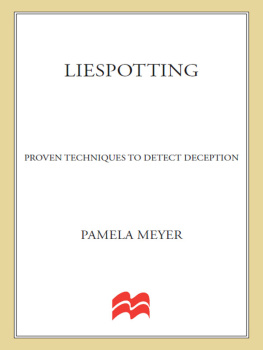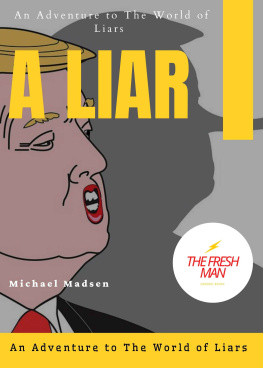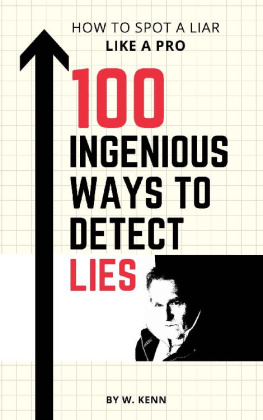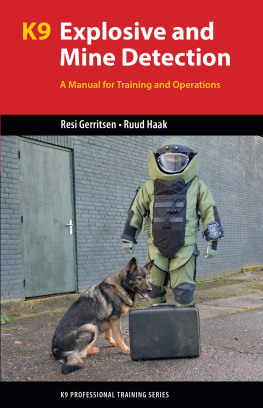Pamela Meyer - Liespotting: Proven Techniques to Detect Deception
Here you can read online Pamela Meyer - Liespotting: Proven Techniques to Detect Deception full text of the book (entire story) in english for free. Download pdf and epub, get meaning, cover and reviews about this ebook. year: 2010, publisher: St. Martins Press, genre: Romance novel. Description of the work, (preface) as well as reviews are available. Best literature library LitArk.com created for fans of good reading and offers a wide selection of genres:
Romance novel
Science fiction
Adventure
Detective
Science
History
Home and family
Prose
Art
Politics
Computer
Non-fiction
Religion
Business
Children
Humor
Choose a favorite category and find really read worthwhile books. Enjoy immersion in the world of imagination, feel the emotions of the characters or learn something new for yourself, make an fascinating discovery.
- Book:Liespotting: Proven Techniques to Detect Deception
- Author:
- Publisher:St. Martins Press
- Genre:
- Year:2010
- Rating:4 / 5
- Favourites:Add to favourites
- Your mark:
Liespotting: Proven Techniques to Detect Deception: summary, description and annotation
We offer to read an annotation, description, summary or preface (depends on what the author of the book "Liespotting: Proven Techniques to Detect Deception" wrote himself). If you haven't found the necessary information about the book — write in the comments, we will try to find it.
GET TO THE TRUTH
People--friends, family members, work colleagues, salespeople--lie to us all the time. Daily, hourly, constantly. None of us is immune, and all of us are victims. According to studies by several different researchers, most of us encounter nearly 200 lies a day.
Now theres something we can do about it. Liespotting links three disciplines--facial recognition training, interrogation training, and a comprehensive survey of research in the field--into a specialized body of information developed specifically to help business leaders detect deception and get the information they need to successfully conduct their most important interactions and transactions.
Some of the nations leading business executives have learned to use these methods to root out lies in high stakes situations. Liespotting for the first time brings years of knowledge--previously found only in the intelligence community, police training academies, and universities--into the corporate boardroom, the managers meeting, the job interview, the legal proceeding, and the deal negotiation.
WHATS IN THE BOOK?
Learn communication secrets previously known only to a handful of scientists, interrogators and intelligence specialists.
Liespotting reveals whats hiding in plain sight in every business meeting, job interview and negotiation:
The single most dangerous facial expression to watch out for in business & personal relationships
10 questions that get people to tell you anything
A simple 5-step method for spotting and stopping the lies told in nearly every high-stakes business negotiation and interview
Dozens of postures and facial expressions that should instantly put you on Red Alert for deception
The telltale phrases and verbal responses that separate truthful stories from deceitful ones
How to create a circle of advisers who will guarantee your success
Pamela Meyer: author's other books
Who wrote Liespotting: Proven Techniques to Detect Deception? Find out the surname, the name of the author of the book and a list of all author's works by series.














